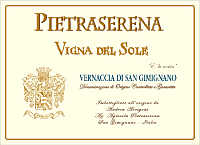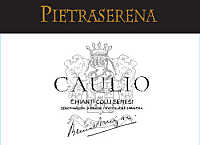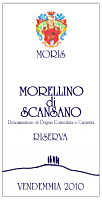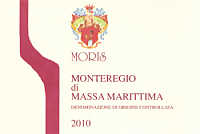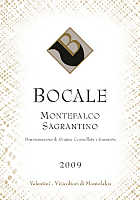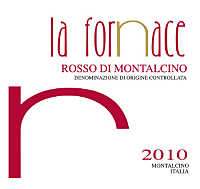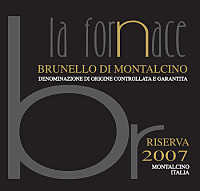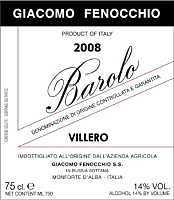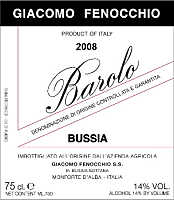|
The quality of a wine, every wine, is determined according to the quantity and
nature of its faults. The higher the quantity of faults, the lower the quality.
From a purely technical point of view, wine reaches perfection in case it does
not have any fault, of any type, of any nature or kind. This condition, of
course utopian, not only can be hardly achieved, but it would also be boring
from a sensorial and organoleptic point of view. of course, it is not perfection
to make beauty: indeed it is harmony and balance of every element and how they
are related one to each other, considered as a whole. In order to simplify this
concept, we should consider, for example, a red wine aged in cask. One of the
main functions of this wood container, as it is commonly known, is to favor the
oxidation of wine, a condition useful for its evolution.
The phenomenon of oxidation, as everyone knows, is generally considered in most
of the cases and in most of wines as a fault, however in case this phenomenon
occurs slowly and with a minimal and controlled oxidizing impact, it is capable
of improving some olfactory and gustatory aspects of a wine. In this specific
case, in fact, it is the quantity and nature of the oxidizing effects to
classify the phenomenon as a good quality or a fault. Another example of the
quantitative influence of a phenomenon which can determine quality is the effect
of Botrytis Cinerea, the so called noble rot. In proper
conditions, when it is prevented the excessive development of this mold, sweet
wines can get a remarkable organoleptic benefit, both in taste and in aromas. In
case this mold is excessively developed, grapes would rot therefore compromising
not only their quality but also the enological result.
What is universally considered as a fault in certain wines, such as oxidation,
in other it can be considered a good quality as well as a main and identifying
characteristic, as in case of Marsala and Jerez or Sherry. If it is true there
are some faults which can be considered negligible in function of wine style,
most of them are considered as such by many and in most of cases compromise wine
quality. Or at least they should be considered, in general terms, as faults. The
capacity of recognizing faults in a wine is one of the main factors
distinguishing real technical taster from simple wine lovers who
sometimes claim to be experts in this discipline. Moreover, if we consider the
role of personal taste - an absolutely subjective expression, fruit of
psychological, social and cultural conditions - a fault can also be considered as
a good quality, an element improving quality.
In the practice of professional tasting, faults play a role of primary
importance, and in function of their presence, they are considered very
important elements in determining quality. For this reason, in professional
tasting, the evaluation of faults of every single phase of tasting - appearance,
olfactory and gustatory - is done before the evaluation of positive qualities.
Faults are the first elements on which the taster pays his or her attention
during the evaluation of a wine: only after having assessed any possible
presence of faults and their nature, he or she proceeds with the analysis of
positive elements. This approach is easily justified - besides being an
agreeable principle - by the fact a quality wine is, first of all, a wine having
the least possible number of faults. Or, at least, having a quantity and nature
of faults affecting the quality of wine in the least possible amount.
|
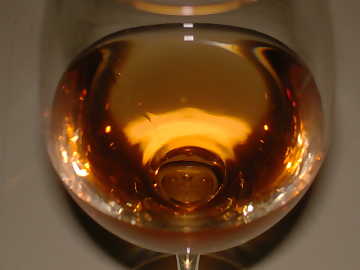 | |
| A yellow amber color is the sign
of oxidation in white wines | |
|
Wine making technology has certainly contributed in a significant way to the
production of better quality wines, allowing every producer both prevention as
well as a cure for certain faults in wine, once being very frequent. If it is
true today most of the wines have a quantity of faults lesser than, for example,
of those made twenty years ago, it is also true today it is seen an excess of
prevention, something which can be found in the quantity of products used for
correcting and stabilizing wines, in a quantity to represent themselves a fault.
We can consider, for example - and this is just one of the many we could provide
- an excessive use of sulfur dioxide, an element useful for the stabilization of
wine and the prevention of certain faults, but it is also capable of evidently
affecting the olfactory profile of a wine with its characteristic acrid smell.
As a fault is a negative factor for the qualitative integrity of a wine, also an
excess should be considered a fault.
Maybe it is because of an excess of prevention or correction, maybe wine making
technique and certain viticultural practices had an excessive impact on the
organoleptic profile of wines, today it seems to happen an evident change of
qualitative parameters. Whether in the past the minimum hints of oxidation in a
wine - white or red, with no exception - as well as hints of the contamination
of acetic bacteria, would have classified that wine as “ordinary” and produced
in a disputable way, today, these faults seem to find the appreciation of many
wine lovers. The predilection for organoleptic quality associated to the effects
of oxidation or to the excess of volatile acidity can certainly meet the favor
of wine lover who consider them as pleasing and positive qualities, however -
according to a purely technical point of view - they are and remain faults. Also
the presence of other serious faults can meet the appreciation of some
consumers, frequently associated to sure signs of wine genuineness.
A significant example, in this sense, is the perception of olfactory sensations
associated to the effect of brettanomyces yeast, capable of
characterizing wines with its quite unpleasing smell. The typical olfactory
sensations developing because of the presence of brettanomyces usually
recall the smells of horse sweat or wet dog, sensations which not all are
capable of recognizing because of their personal olfactory threshold. When
present in small quantity, some smells - such as the ones produced by
brettanomyces - can be mixed up with the overall olfactory profile of a
wine and therefore completely unnoticed. Faults in a wine can in fact be pretty
insidious, in particular when the taster mainly focuses his or her attention -
almost exclusively - to the evaluation of positive qualities while completely
neglecting the preliminary phase of fault analysis.
There are smells that, undoubtedly, are considered serious faults by everyone,
faults that, unequivocally, bring the wine to be rejected. One of them is the so
called cork taint, caused by the sadly famous 2,4,6-trichloroanisole,
TCA in short, a substance developing in presence of the Armillaria
Mellea, a parasite fungus of cork oak tree. The smell of cork taint is not
simple to describe, however it becomes unmistakable after having perceived for
the first time. Quite similar to the smells produced by wet cardboard, mold, wet
dog and humid cellar, the smell of cork taint is frequently mentioned by
pseudo experts, who at the presence of any “suspicious” fault, they
identify it with this smell. Sometimes confused with the olfactory qualities
given to the wine by an excessive use of cask or other fault associated to
molds, cork taint is sometimes confused with reduction fault, of
completely different nature.
The identification of faults is a complex practice, certainly more difficult
than identifying positive qualities of a wine. We mentioned, for example, the
faults caused by reduction and brettanomyces - and the same
consideration is valid for cork taint - which smells are easily recognized both
by using the proper olfactory and gustatory analysis technique, as well as
thanks to the important role of experience. It is impossible, in fact, to
identify a fault - likewise, a positive quality - in case one does not know that
specific smell. After all, you can recognize what you already know only. The
same consideration, like already said, is true for positive qualities of a wine:
it will be impossible to identify, for example, the pleasing aromas of lychee in
case one does not know this fruit and its characteristic aromas. Likewise, the
same is true for any other aromas, either a fault or a positive quality.
The positive organoleptic qualities - in general terms - are however easier to
identify, also thanks to the analogy used during the evaluation of organoleptic
quality of a wine, as the association with elements and substances is more
familiar than those associated to faults. Moreover, the lesser presence and
influence of faults in modern wines, have brought the taster - more frequently,
the wine lover - to ignore this aspect, while trusting the quality of a wine,
frequently ensured by the better quality technological wine making progress
introduced in wineries. Like already said, progress made in wine making, has
allowed a wider spreading and availability of techniques and products useful to
the improvement of wines. This also brought a remarkable reduction of the
quantity of faults, by encouraging wines to be considered, from an organoleptic
point of view, a beverage mainly made from positive qualities while neglecting
any possible presence of faults.
The excess of certain wine making techniques, also of corrective and
preservative nature - to be however considered as faults - get a higher
attention than real faults. From a sensorial point of view, an olfactory and
gustatory stimulus can be easily identified when it is evidently present, with
an intensity such to be dominant. Also a fault, when it reaches an intensity
such to be dominant, can be easily identified, although not really identifiable,
however enough in order to realize in the overall organoleptic profile of a wine
there is an “extraneous” element. The difficulty of identifying faults is not
in fact represented by the capability of knowing and recognizing them only: most
of the times intensity is not stronger than other organoleptic sensations,
therefore they pass unnoticed because a taster pays higher attention on the
rest.
For this reason, it is very important to pay attention on faults before
analyzing the positive qualities of a wine. During the first smells, the level
of sensorial inurement is practically absent, therefore the nose is in a quite
“uncontaminated” condition which will favor the perception of faults. This
capability decreases with the subsequent smells and, last but not the least,
also the olfactory intensity of faults will tend to fade with time, both because
of a lesser sensitivity of the nose, as well as for the effect of oxygen which
could disperse the volatile components of the fault. As an example, we can
conduct this experiment: take a wine affected by cork taint and do a preliminary
smell. Cork taint will be pretty evident and intense, probably dominating all
the other aromas. Proceed with more smells: cork taint, although still present,
will seem to fade its strength. Now energetically swirl the glass, in order to
favor a strong oxygenation of the wine, therefore, smell it again: cork taint
will seem to have an even lower intensity, however present, than the other
aromas.
|




